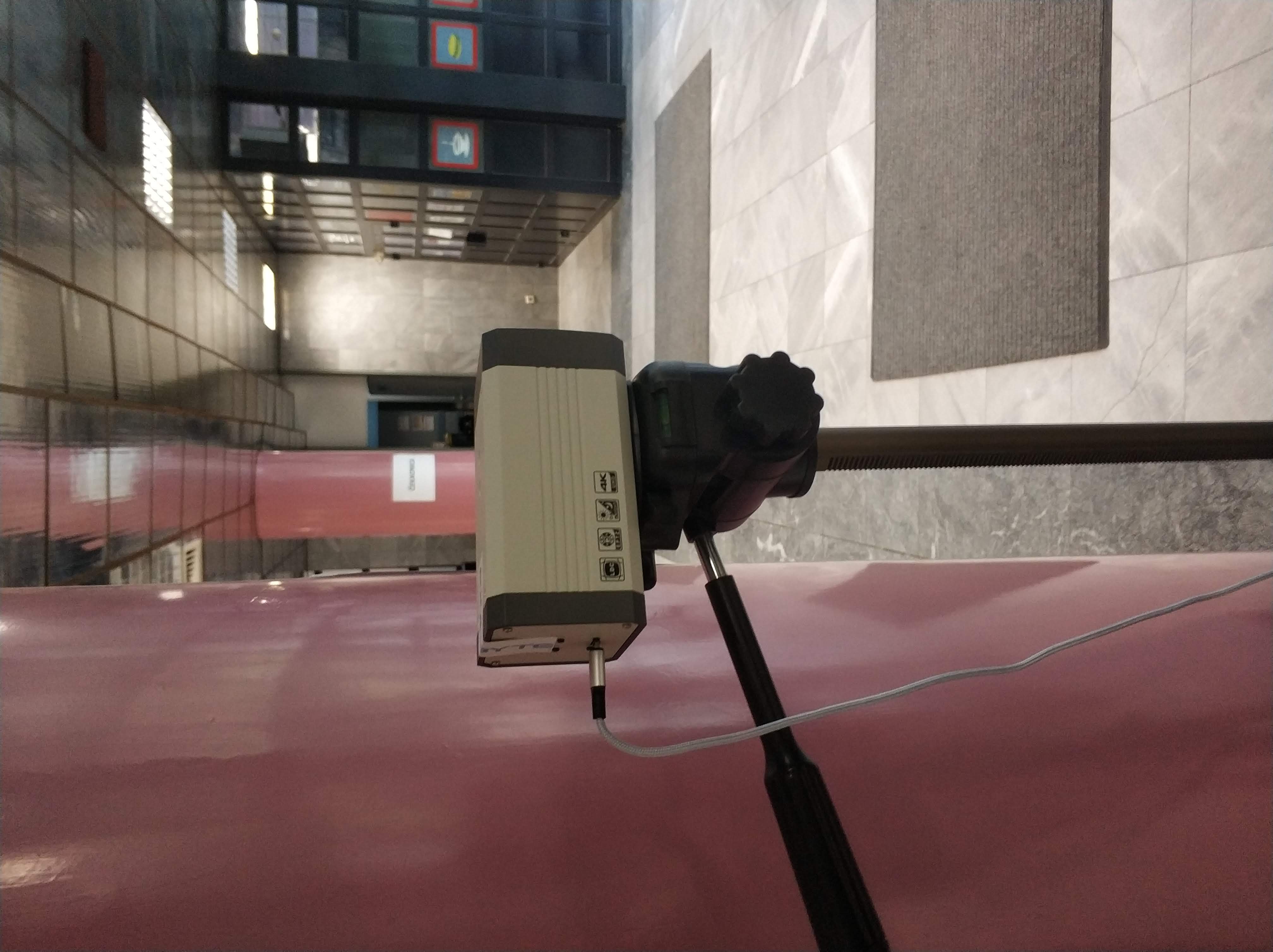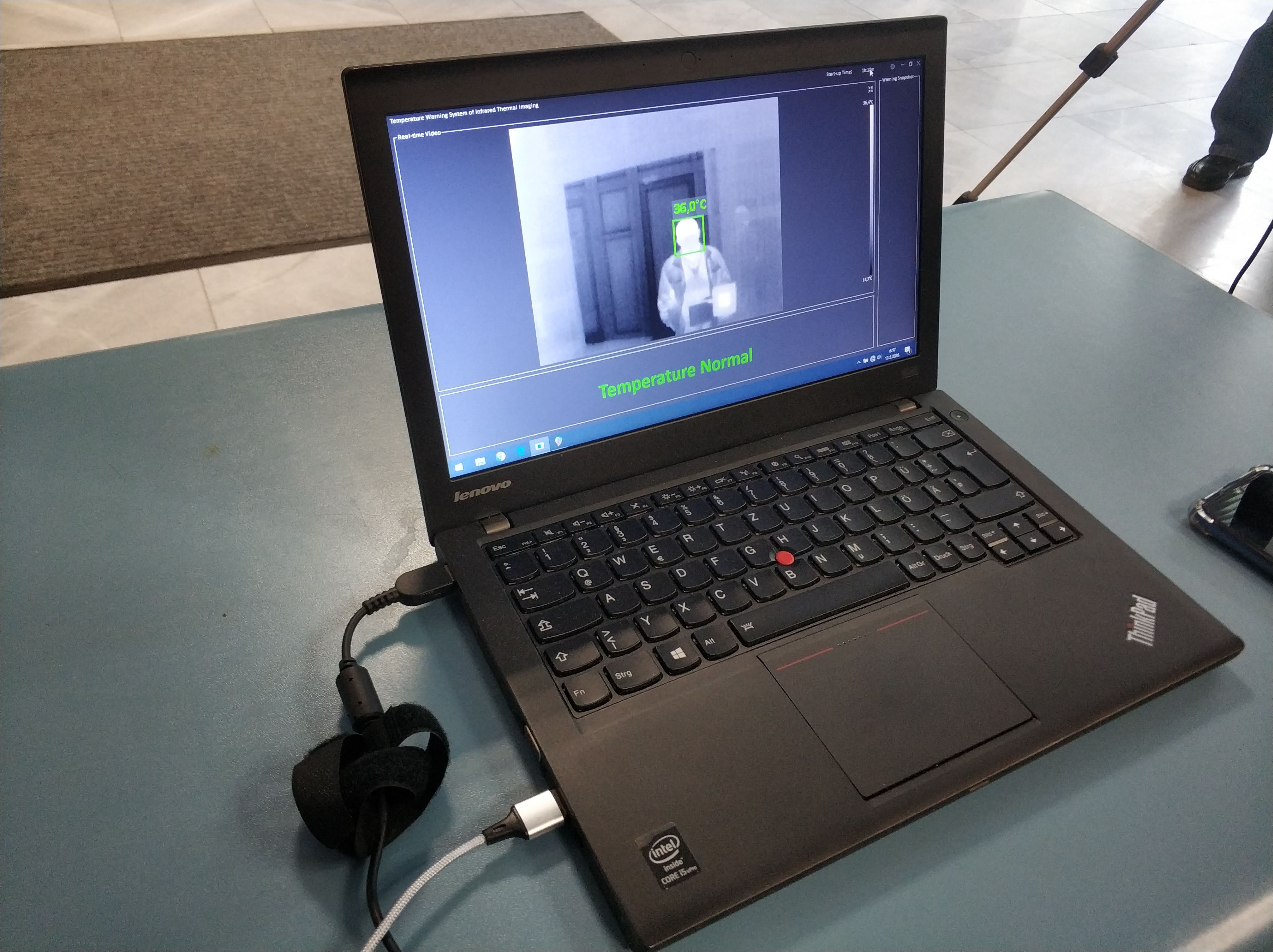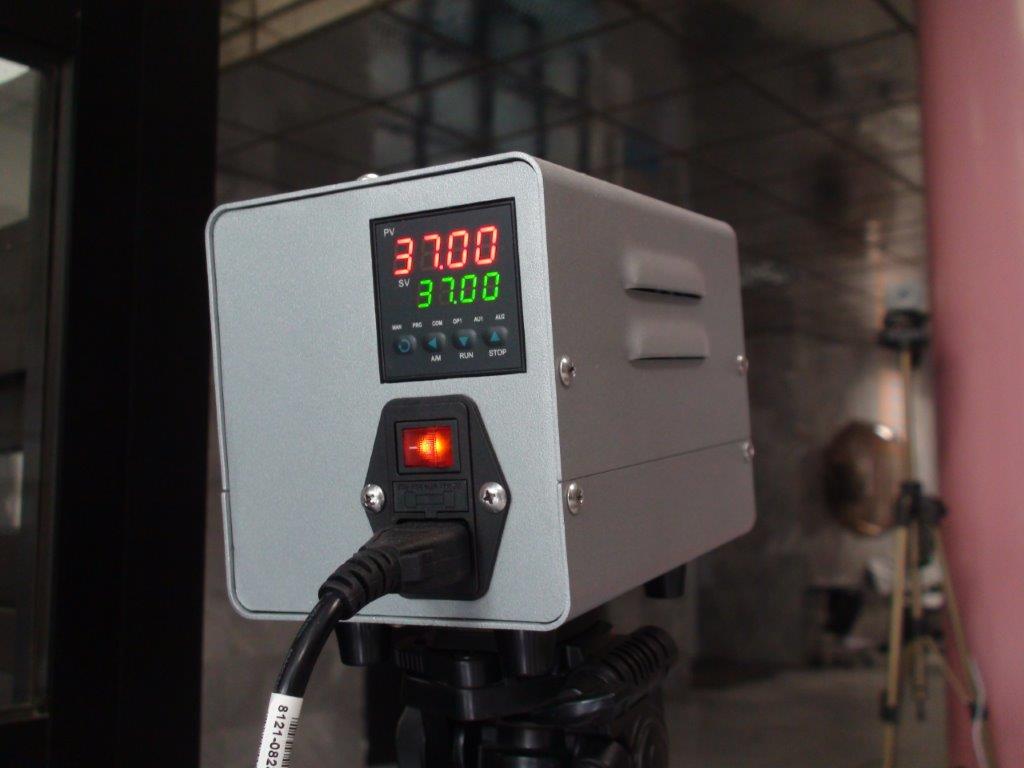Gordan Lauc: It's Now Finally Clear Why Coronavirus Spread So Quickly
As Vecernji list writes on the 4th of June, 2020, Dr Gordan Lauc took to Facebook to explain just why the new coronavirus spread as quickly as it did.
''The good side of this knowledge is that we now know that the vast majority of people who become infected will overcome the disease without any major problems. This is also great news for our tourist season, because even if a certain number of infected people do show up, there will probably not be many seriously ill people,'' wrote Gordan Lauc.
Gordan Lauc also posted a link to a scientific paper on Facebook which he considers important for understanding the new coronavirus.
Namely, Gordan Lauc points out that research shows that at least 40 percent, and in some cases even more than 80 percent, of people infected with the SARS-CoV-2 virus either don't develop any symptoms or only mild ones. That explains, he believes, why the virus initially seemed to spread very quickly.
''The path to the truth is not easy an easy one, especially when you're researching something new and unknown. But what distinguishes science from pseudoscience is that in science, we're constantly questioning the current knowledge, looking for new evidence and making new hypotheses based on it.
Scientists know this and are accustomed to this form of re-examination, but unfortunately, in the flood of information about the coronavirus during this pandemic, sometimes in public and in the media, the difference between what is considered scientific truth and what is yet to be proven gets lost. An unusual feature of the SARS-CoV-2 virus is that it causes almost no symptoms in some people, while in others it causes a severe disease that can often be fatal.These asymptomatic cases have significantly contributed to the spread of the virus, while confusing scientists who couldn't understand how the virus spreads so fast and jumps from person to person in such vague ways.
A significant scientific paper was published today that should close one of these unknown chapters. The link to the work is below, and here I'm going to convey only some of the most significant conclusions: At least 40 percent (and even more than 80 percent in some cases) of people infected with SARS-CoV-2 virus (i.e. positive on a PCR test) will either not develop symptoms, or the symptoms they do develop will be mild. These people will not even know they're infected and will be able to transmit the virus to others. This explains why, at first, it seemed to us that the virus was spreading very quickly. It actually didn’t spread so quickly, but we tested more and more people and found more positive cases that had been infected previously, only no one knew that.
The good side of this realisation is that we now know that the vast majority of people who become infected will overcome the disease without any major problems. This is also great news for our tourist season, because even if a certain number of infected people do show up, there probably won't be many seriously ill people (something similar to what we saw recently on Brač).
The downside is that if/when the virus returns to Europe, it will be very difficult to control the epidemic by targeted testing and the isolation of the contacts of infected people. That way, we'll be able to find, at most, only half of the potential vectors of the disease. In fact, the only thing we'll have left at our disposal will be the so-called Japanese model in which we will all have to try to be as responsible as possible and try not to spread the virus,'' Gordan Lauc wrote in a statement.
For more on coronavirus in relation to Croatia, follow our dedicated section.
Istria Begins New Campaign to Attract German and Austrian Tourists
As Novac writes on the 3rd of June, 2020, starting this weekend, the Istrian Tourist Board is launching intensified media advertising in its emitting tourist markets with special emphasis on the area of Austria and southern Germany, under the slogan "Istrien so nah!" (Istria so close!).
Building on the current destination campaigns conducted in cooperation with the Croatian National Tourist Board (HTZ), the last of which being "The vacation you deserve is closer than you think" which is being directed towards seven European markets, Istria wants to focus additional attention on its close and faithful markets - German-speaking tourists.
The promotion of the Istrian Peninsula was actively carried out by the Istrian Tourist Board during the previous period of coronavirus induced "dormancy", so, among other activities, two significant newsletter campaigns were realised at more than 500 addresses in Austria and Germany.highlighting Croatia's good crisis management during the pandemic, while in the second, the opening of accommodation and catering facilities, attractions and other tourist facilities was presented.
The director of the county office, Denis Ivosevic, believes that the long-standing friendship between Istria and its Austrian and German guests will be expressed even during these extraordinary circumstances, mutually confirming the level trust built over many years - on the one hand - the optimism and loyalty of Istria's visitors, and on the other hand, by the development of high quality services and facilities on the Istrian Peninsula.
By always following the trends in the travel market, as well as listening to the wishes of its visitors, Istria has developed a type of tourist infrastructure that, even in these difficult times caused by the global pandemic, can offer the necessary security and all the conditions required for a pleasant holiday.
An additional incentive in choosing a destination will be provided by the advertising momentum on online channels, which is scheduled to begin on June the 5th and will last for six weeks, intended primarily for visitors looking for an offer of camping and private accommodation.
Selected motifs, such as attractive Istrian panoramas, from the famous views of Rovinj and the picturesque outline of its old town, a romantic twilight over Porec to the nearby Brijuni islands and more will be used to lure German and Austrian tourists who are more than likely needing a getaway after the last period, to Istria.
Advertisements promoting Istria also contain a partner logo that officially connects Istria County with one of the world's strongest brands - the football giant FC Bayern Munich. The agreement on this important strategic partnership with the tourist board was signed two years ago, on June the 4th, 2018.
In addition to the Tourist Board of Istria County, this advertising is financially supported by the Croatian Tourist Board and several leading hotel companies in Istria.
For more, follow our travel page.
Exclusive Interview: EU Presidency Tourism Minister on Border Openings, Air Bridges and More
June 3, 2020 - TCN meets the current EU Presidency Tourism Minister Gari Cappelli who kindly agreed to answer questions on the current travel situation in Croatia and the EU.
There is a lot of talk about the internal borders being opened on June 15, but I can't find an official announcement. Are EU internal borders opening on June 15?
We are aiming to reopen internal borders on June 15 or June 16, but this has not yet been 100% confirmed. An announcement will be made shortly. There is also a big meeting of EU members scheduled for June 19. While we all want tourism to start, the epidemiological situation must be under control. Even when we do open borders, I would expect some countries to have restrictions. We are working towards a date of June 15. This opening of borders will be for all EU states, not just those in Schengen.
What about external EU borders and continental flights?
We are currently working with the airlines towards an opening of external borders on July 1, but ONLY for countries which have a good epidemiological situation.
If an American is already living or travelling in Europe, can they currently visit Croatia?
Yes. If they can get to the Croatian border and fulfill Croatia's entry requirements, they are very welcome. We have had 316 Americans entering the country in recent days.
There has been speculation about air bridges from the UK to other tourism countries, including Croatia. Can you tell us more?
No. I have been involved in no such discussions, yet.
What is the situation for people wanting to drive to Croatia from across Europe. Are there any problems?
I have heard of a couple of isolated incidents, but in general, there is no problem. My strong advice is to register your details at https://entercroatia.mup.hr/ This is a service that we developed very quickly so that we can facilitate smoother travel for our guests, a quicker border crossing, and the ability to contact our guests in the event of a virus outbreak. If you are driving to Croatia, fill in this form and you will receive a confirmation from the Croatian police. Show that confirmation and proof of paid reservation, and you will have no problem.
I hope this clarifies some of your readers' questions. I hope you all have a wonderful stay in our beautiful country. You are all very welcome.
For the latest travel info, bookmark our main travel info article, which is updated daily.
Read the Croatian Travel Update in your language - now available in 24 languages
Rotary Hrvatska Donates Thermal Imaging Cameras to Healthcare Institutions
As Lucija Spiljak/Poslovni Dnevnik writes on the 3rd of June, 2020, Rotary Hrvatska (Croatia) has very generously donated 29 thermal imaging cameras to health institutions across the Republic of Croatia with a total worth of 2.9 million kuna. They state that the move was made to help hospitals and other healthcare institutions work to prevent the spread of the new coronavirus, COVID-19.
Thermal imaging cameras are used to detect fevers in humans and are useful for monitoring in places with a large flow of people, especially in hospitals. Yesterday, KBC Zagreb officially received the cameras and the director, prof. dr. sc. Ante Ćorušić, pointed out that Rotary Hrvatska's donation is a valuable help and supplement to gain a better better control of people who come into the hospital during the pandemic.
As they explained from Rotary Hrvatska, thermal imaging cameras help identify people with a fever as a result of any sort of infection, not only one caused by the person having contracted the new coronavirus.
''They were procured after consulting with the medical community, which highlighted them as valuable pieces of equipment which can help prevent the spread of the new coronavirus. Fighting disease has so far been one of Rotary Hrvatska's core activities, and so now, when uncertainty and hardship is affecting our normal lives, our members are doing their best to serve the community in the way that benefits it most,'' they state.
They also emphasised that communities want to help with their own donations through the Rotary Foundation as well. Their clubs throughout the Republic of Croatia have already donated significant amounts of protective equipment, and now they want to make an even bigger and longer-term contribution by purchasing and donating thermal imaging cameras to Croatian hospitals and medical facilities.
"At the time when KB Dubrava began dealing with other patients in addition to operating the primary respiratory-intensive care centre for the treatment of COVID-19 patients, the need for thermal imaging cameras positioned at the main entrance to the hospital gained additional significance because they provided a reliable and very simple way of checking the body temperature of a large number of people, with minimal involvement of hospital staff.
This helps in many ways to fight the spread of COVID-19/SARS-CoV-2 and ensures safe work within the 'clean' part of the hospital,'' explained prof. dr. sc. Ivica Luksic, the coordinator for the organisation of the hospital treatment of patients who have contracted COVID-19 for the City of Zagreb and northwestern Croatia.
For more on coronavirus in relation to Croatia, follow our dedicated section.
Minister Maric Claims Economic Recovery Won't be Like 2008
Croatian Finance Minister Maric has sought to assure the public in saying that Croatia's recovery from the current economic crisis we're embroiled in, induced by the coronavirus pandemic, won't be as difficult to come out of the other side of as the one which occurred back in 2008 was.
Everyone likely remembers the financial crash of 2008 and the tremendous economic consequences that followed. Many countries, particularly those with less economic strength in general struggled to make a comeback and get back on their feet after that event, and the Republic of Croatia is among those who were dealt a particularly harsh blow from which recovery took a long time.
As Poslovni Dnevnik writes on the 3rd of June, 2020 inance Minister Zdravko Maric recently stated that pensions would be paid by the time Corpus Christi rolls around, As for fiscalised receipts for the month of April, known as Croatia's lockdown month, they are in the red by 40 percent, and in May there was significant recovery as the anti-epidemic measures were loosened, seeing them stand at somewhere around 18 percent in the red.
"When lockdown started, we said that the month of May might be more challenging. From the 1st to the 31st of May, the tax revenue index stood at 48.7 which is a drop of over 50 percent when compared to middle of last year's tax levies.
It should be noted that the weekend in May was the end of the month. The numbers are better though, though I won’t try to embellish anything here either. Last year, the 31st fell on a Friday and this year the 31st fell on a Sunday, so we had two less working/business days to work with. When we include and add to the above figures what we were working with on Monday, then the tax revenue index is at the level of 60, so the decline stands at about 40 percent. Our recovery from this crisis will not be as difficult as the recovery we experienced back in 2008," Minister Maric stated.
Croatian Tourism: Should Croatia Forget About Italian Tourists This Summer?
As Poslovni Dnevnik writes on the 2nd of June, 2020, everyone who is expecting Italian tourists all over Europe and the world this year will be disappointed because, according to the current mood of the Italians, many of them will not leave Italy during the summer. Croatia is a favourite destination for many Italians, but should the Croatian tourism industry simply forget about Italian guests this summer?
''According to current polls, it is estimated that only three percent of those Italians who have gone abroad on holiday in previous years will leave Italy at all this tourist season. That is a miserable number compared to those polls taken before the pandemic hit,'' says Rea Karnincic from Milan, who is originally from the Dalmatian city Split and owns the travel agency "Solo Croazia" for Slobodna Dalmacija.
The real question is, is there any interest at all from Italians for a holiday in Croatia, does Rea's travel agency have such inquiries?
''Well, I can't say my phone lines are really hot. For months, no one called because no one knew what would happen with the coronavirus pandemic and how the situation would develop. In recent days, the phone has been "shyly" ringing, they're starting to become interested again, but I think that everyone in Europe, including people in Croatia, can forget about Italian tourists during June. Maybe there'll be a few of them during July, August and September. The shipping company SNAV, which connects Italy and Croatia, will start sailing only on June the 27th, and the planes will take off only at the beginning of July. In addition, Jadrolinija starts operating with Italy again on June the 10th or 12th, so just twice a week,'' said Karnincic.
The fact that this current negative mood in Italy is bad for the Croatian tourism industry is best shown by the fact that before the coronavirus crisis, about a million Italian citizens came here during the summer months.
''And those are some bygone, better times. The answer to why many Italians won't bother to travel abroad this summer should be sought primarily in financial reasons, as many people have become impoverished or out of work, so they just can't afford a holiday. Another reason is that many Italians no longer have any days off, because during the crisis, they took advantage of the "old" days off and those for this year.
The third reason is that the Italian state encourages Italians to stay and spend their holidays in Italy and thus help the country's economic recovery. Thus, each family will receive a voucher worth 500 euros, which must be spent in hotels in Italy. Single people will receive a voucher of 150 euros,'' concluded Rea Karnincic in an interview for Slobodna Dalmacija.
For more on Croatian tourism in the coronavirus era, follow our travel section.
Varaždin Company ExaByte Creates Hit Rapid Temperature Measurement System
June 2, 2020 - One of the things we have to accept as a part of our "new normal" life post-corona is that our temperature is going to be measured regularly when trying to enter some institutions. Thus, a Croatian company from Varaždin, ExaByte has created a system that will make it as simple and efficient as possible.
Ines Brežnjak writes for dnevno.hr about the ExaByte company. They have been in business for 12 years now, working on the development of sophisticated IT solutions with implementations in numerous industries (including advanced systems for news websites, the integration of the current business solutions with advanced e-commerce solutions, software support to the industrial manufacturing through the implementation of the artificial intelligence technologies). Now they've decided to develop IT technologies to be used to prevent the spread of coronavirus, protect the healthcare workers, and in many other industries. During the COVID-19 pandemic, they started developing a system that uses artificial intelligence to measure someone's body temperature rapidly. Their system is, compared to similar existing products on the global market, much cheaper, mobile, and simple to install and use.
New Time - New Technologies
"As we talked to a colleague who has a medical degree, we recognized that being able to control the bodily temperature of many people is one of the bottlenecks and critical points in the age of the epidemic. The standard technology used here these days is measurements with contactless thermometers, which is a technology not up to the challenge during the pandemic times. When you want to use such a handheld contactless thermometer to measure the temperatures of each person in larger groups, such as in hospitals, health centers, factories, schools, or daycare centers, many problems appear", Bernard Toplak, the ExaByte owner explains. Those include an increased risk of infection for the person doing the measurement, as the person holding the thermometer must come within a meter of the person whose temperature is being taken, and who is potentially infected. Also, those measurements can be very imprecise unless they're used properly, and the variation can be up to 2 °C. Many of the hospitals in Croatia have erected mobile tents where the measurements are performed, and such measurements are done in the open, on people with colder foreheads. None of that complies with the specifications and the instructions written by the producers of contactless thermometers. They're designed and calibrated to be used at room temperature and indoors.
It's evident that handheld devices are just not up for the challenges and dangers of today. That's why numerous systems based on thermal imaging infrared cameras are being introduced worldwide to measure temperature. The solutions that were available in Croatia in March and April were based on security cameras with night-vision capabilities, and they cost between 18 thousand and over 26 thousand euros. That's why ExaByte decided to create their own solution, not compromising on the quality, but at just the fraction of the cost. They've worked closely with a well-renowned producer of specialized thermal imaging cameras since early March, developing software based on artificial intelligence, which can control body temperatures of a group of people fast, using the thermal imaging camera and a reference black body. And, Toplak is proud to say they were successful, and they have a system which is much cheaper than the competition, and much simpler to install and use and is mobile.
Features of the system include a group screening of the bodily temperature without stopping, ultra-fast measurements (it can measure up to 9 times per second), it's mobile (can quickly be taken from one location to the next if needed), it's simple to install and use.
The Same System is Used Worldwide
"The same system was recently implemented in thousands of hospitals in China and all over the world, in factories, schools, and other locations where there are many people. For instance, our partner's cameras are located on all subway stations in Wuhan, the epicenter of the pandemic. In Croatia, you can find equipment by those who usually sell surveillance (security) cameras, which have been improved so they can measure temperature instead of performing night-time surveillance. Some of the solutions are quite good, but some of them are not exactly of high quality, especially if they don't use the black body device to calibrate the measurement. Our cameras have been developed to measure temperatures, and not for night-time surveillance," Toplak said when asked if similar systems are used elsewhere.
A very precise infrared camera is used as a fundamental element of the system, which was developed to measure temperatures in industrial settings, such as to protect against overheating of machines and plants, for protection against fires, to supervise the electro-installations, the transformers, etc. The camera has a very high resolution and precision, which allows us to be precise at a distance of over 4 meters. That's what makes the system perfect for installation at the entrances to the hospitals, factories, schools, daycare centers, public administration waiting rooms, and other areas where many people are found at the same time.
The other key element is the reference heat source, the so-called black-body element, widely used to calibrate the infrared effect of the optical systems, the infrared detectors and other instruments using the infrared radiation.
"Other systems, which don't use the black-body source, are unable to achieve precision, which depends greatly on external influences (winds, drafts, sudden changes in the temperature, etc.). Our system re-calibrates nine times in a second using the black-body source, which gives us the precision with the deviation of up to ±0,3 °C at 4 to 5 meters. Our software is built on our many years of experience, but also our partner's rich experience, and they're a factory producing infrared sensors and precise industrial cameras", Toplak explains.
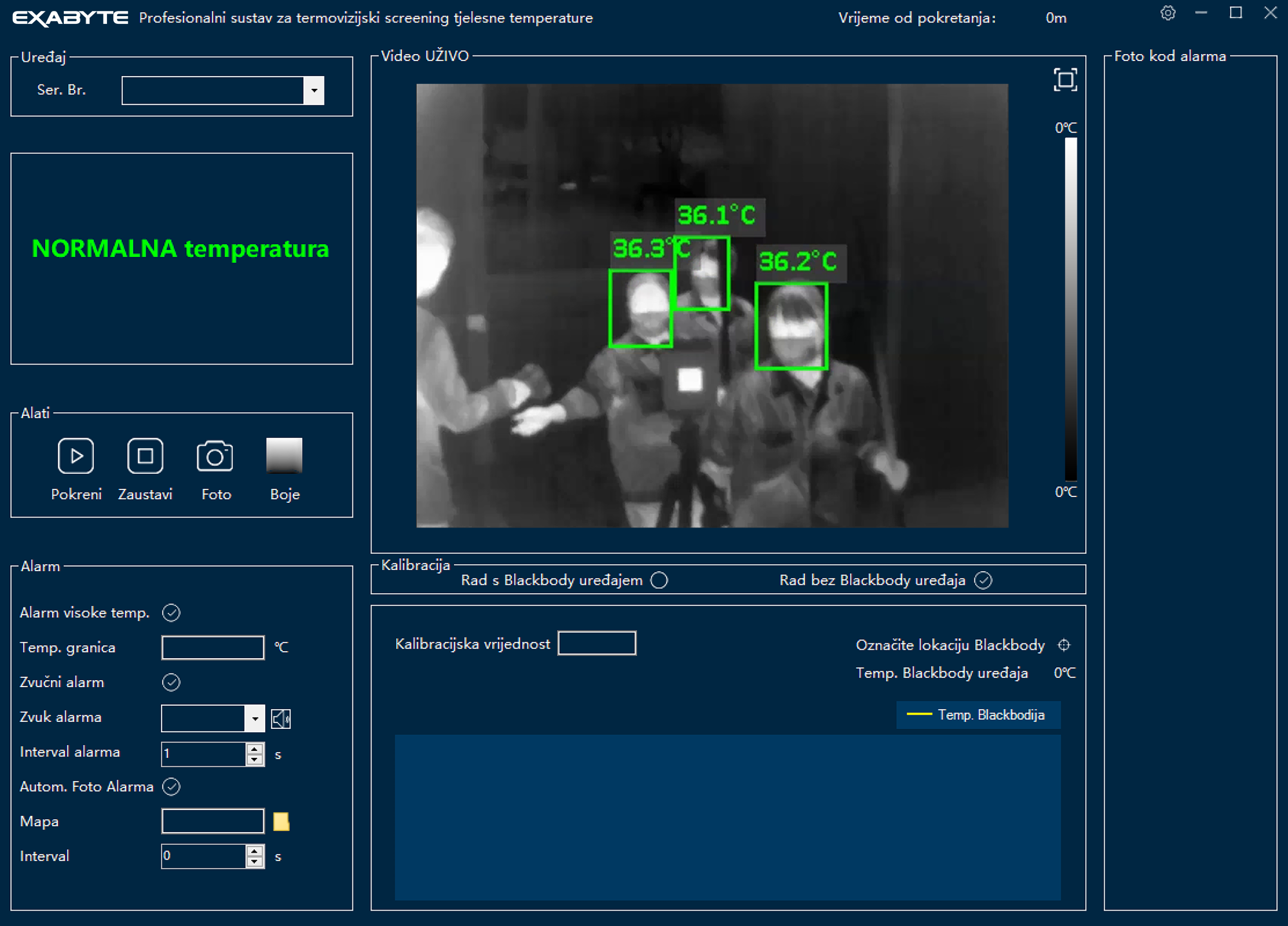
The prototype of their system is being tested in Varaždin hospital, where such technologies can significantly help. ExaByte has let the hospital use it for free, and the feedback is very positive. IT was the feedback that led them to offer their system on the market, not just in Croatia. They're already talking to partners in Italy, Germany, Slovenia, etc., and many of them are interested in ExaByte's solution, Toplak concludes.
If you would like to find out more information about this product, please contact This email address is being protected from spambots. You need JavaScript enabled to view it. Subject Temperature.
To find out more about business in Croatia, follow our dedicated Business section.
Analysts Look into Coronavirus, Croatian GDP, Tourism, Economic Downturn
As Jadranka Dozan/Poslovni Dnevnik writes on the 1st of June, 2020, as we reported recently, the credit rating agency Standard & Poors has kept Croatia's current ratings, although, like most others, it predicts a 9 percent drop in GDP this year, meaning that Croatian GDP will continue to feel the negative effects of the ongoing coronavirus pandemic for some time yet.
On Friday, state statisticians used a series of economic indicators to quantify the scale of the corona crisis on the Croatian economy.
In addition to estimating Croatian GDP for the first quarter, which the coronavirus pandemic severely affected by reducing annual growth to a mere 0.4 percent, the Central Bureau of Statistics (CBS) announced double-digit rates of decline in retail sales and industrial production for April, Croatia's lockdown month, with the fiercest direct blow to the domestic economy.
As much as the April minuses of 25.5 percent (retail trade turnover) and 11 percent (industrial production) come as a concerning shock, they aren't really a surprise. However, Standard & Poors made sure that the weekend started with a little less bad news for Croatia.
It reaffirmed Croatia's existing credit rating (BBB-) and maintained a stable outlook for the next revision. The report will certainly not do any harm to Finance Minister Zdravko Maric's position, who should enter the international market next week with new Eurobonds, the sale of which will seek to raise significantly more money than the amount needed to refinance 1.25 billion dollars of old bond debt. S&P has kept its current ratings, although, like most others, it predicts a 9 percent drop in Croatian GDP this year, which is one of the highest projected fall rates in the entire European Union (EU) for 2020.
Croatian GDP's recovery could begin in the second half of the year, which could result in a 5.3 percent increase next year, and 2.5 percent a year later, they forecast. Overall, the return of Croatian GDP to the 2019 level, they say, isn't likely before 2023, as the recovery in the tourism sector will also be very gradual.
With this new report, the agency is early in its regular audit calendar for more than obvious reasons.
The confirmation of Croatia's investment rank (although it remains the lowest on that scale) is explained primarily by the expectation that the tourist season will not completely fail (it is likely to record a drop of about 70 percent) because Croatia is a destination to which many can drive for the largest emitting markets such as Germany, Austria and Slovenia, making it a little less dependent on air travel recovery.
In addition, the S&P emphasised the solid level of the Croatian National Bank's international reserves, as well as the recent agreement with the European Central Bank on the so-called currency swap worth up to two billion euros. This should alleviate any immediate external pressures on liquidity and on the kuna's exchange rate.
The aforementioned amount of available currency swap could be further increased when Croatia joins the European Exchange Rate Mechanism (ERM 2), that's if it does end up joining it this summer, the report states.
After the Croatian Government submitted an official request to enter what is commonly known as the "lobby" or ''waiting room'' during the procedure to adopt the euro in July last year, in addition to which it undertook a number of ''homework assignments'', the result of all that remains to be seen.
In the meantime, the findings of the ECB's asset quality review and bank resilience testing, which affected five banks in Croatia, are expected.
As the asset quality review refers to last year, and given the above-average capitalisation of local banks, it seems that these findings shouldn't be an obstacle to Croatia's entrance into ERM 2. The government recently concluded that all points of the action plan have now been met. However, S&P emphasises that in addition to the aforementioned "tangible" benefits, joining ERM 2 could be an incentive for structural reforms.
The key risk for a return below the investment grade rating for Croatia would be the scenario of new travel restrictions and an economic downturn that would result in a more pronounced impact on the deteriorating balance of payments and a more permanent weakening of public finances and an upward public debt trajectory.
Although Croatia is heavily dependent on tourism and less integrated into global value chains than comparable countries are, S&P believes that reducing macroeconomic imbalances in recent years has created the basis that a temporary shock to the economy should not result in more permanent damage to the country's credit metrics.
With the tools at the disposal of the central bank (with generous foreign exchange reserves further strengthened by the arrangement with the ECB), S&P estimates that even in the scenario of a 90 percent drop in tourism revenues (without other serious outflow pressures), the CNB could successfully cope with depreciation pressures.
Make sure to follow our lifestyle page for much more.
Croatian Tourism: Drastic Price Drops, Many Hotels Won't Open
As Poslovni Dnevnik writes on the 1st of June, 2020, as the coronavirus pandemic continues but the tourism industry begins to put the state of the economy in first place, the last minute trend in Croatian tourism has already started, meaning that tourists can now can jump on a plane and go on holiday in June with discounts from between 10 and 25 percent.
The Republic of Croatia always swung between being expensive and cheap. The hotels are typically expensive, but eating out in restaurants tends to be quite easy on the pocket. The coronavirus pandemic has altered the view of those who once deemed Croatia a cheap tourist destination, and those who deemed it too expensive will also be disappointed with the attitudes of some stakeholders in Croatian tourism, particularly hotel companies.
There will be certain price reductions and those who wish to scrape by for this tourist season will have to come to terms with the fact that the prices have been slashed and that tourists' pockets are more shallow. However, the managements of some of the largest hotel companies in Croatia have been clear - they would rather not open all of their hotels just to fill up their rooms for a much lower price.
As Vecernji list writes, "if you can't make money, why would you increase your losses?'' asks a Croatian tourism professional on the coast.
The Dubrovnik Importanne resort is among the few that has announced that it will reduce its prices by 30 percent in June and that the reductions will also continue throughout the summer season. True, these are luxury hotels, but, regardless of whether the tourists they attract come from elsewhere in Croatia or from abroad, guests include the bill for the amount of the toll payment along the route from Ploce to Dubrovnik, so the already reduced price drops by about 260 kuna if they stay for at least a couple of nights.
If, on the other hand, the stay includes at least four nights, the package is cheaper by five hundred kuna, or the amount of the toll payment in both directions.
Hotels Pinija in Petrcane, Pastura in Postira, Kolovare in Zadar, apartments Medena in Trogir, Fontana in Jelsa… all offer discounts from 25 to 40 percent. For those who don't care which Adriatic destination or hotel they are going on holiday, it will be worth the risk to wait for the "sale" to begin as Croatian tourism battles to attract tourists from at home and abroad.
For more on companies operating in Croatian tourism in the coronavirus age, follow our business page.
Coronavirus, Earthquakes, Identity and Awareness - Zagreb, I Love You So
June the 1st, 2020 - Zagreb has suffered being the first coronavirus hot spot in the country, a devastating earthquake, and many questions surrounding its identity in the wake of all that, as it continued to hold the presidency of the European Union.
Oblivion is the saviour of human existence. Just remember how all of us cheered with joy and went around with half empty bottles in our pockets, hoping for the midnight of December the 31st to erase all of the flaws of 2019 and give us another clean slate. Good health was one of the most frequent ingredients of most every well-wishing card (rather: of most e-mails and text messages). But, as we know, something went thoroughly wrong.
In Zagreb, the capital of the country that rightly boasts its exceptional results in fighting the new coronavirus, COVID-19, off, the old saying that ''one evil never comes alone'' unfortunately proved to be very true indeed. On March the 23rd, 2020, amidst a general lockdown because of the coronavirus pandemic, it was hit by a strong earthquake (and a series of quite serious aftershocks that followed) that caused unfathomable damages in the area, and especially in its very historic centre.
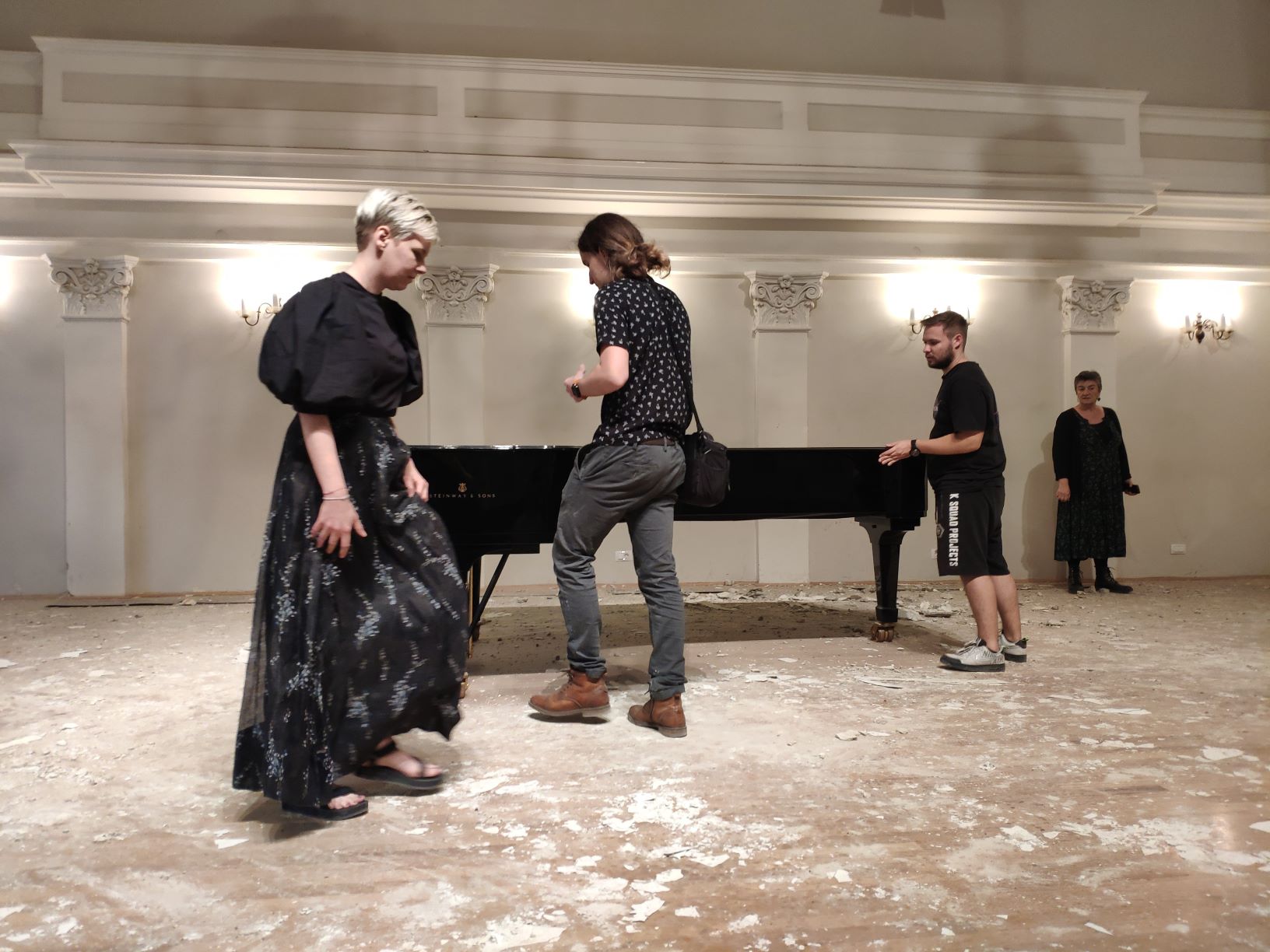
In the world of arts, after the lockdown that paralysed everything and jeopardised the sheer existence of artists, be they freelance or otherwise, the earthquake served yet another, almost fatal blow to the capital's arts and culture scene. The blow came with such a force that almost every single theatre had to be put out of use, just like most museums, galleries, art institutions and schools.
The impression is that, due to the coronavirus epidemic around the globe, the bad news in Zagreb fell very much under the radar and without the level of attention it deserved. Somebody felt that much more attention was needed. And that was a Croatian agency called Unimedia.
Unimedia is an agency which boasts wide range of professional services in public communications, promotions, campaigns, tourism films, short films and documentaries. In short, you name it, Unimedia probably does it. Their successful collaboration with the internationally respected Zagreb Soloists gave them an inspiration, says Unimedia’s owner Nikola Mihaljevic:
''The day after the earthquake it became clear that the Zagreb Soloists were deprived of their only proper stage in Zagreb. The legendary hall of the Croatian Musical Institute (HGZ) was so damaged that it was dangerous to even peep inside. We then went around Zagreb with our camera to see and register other venues of historic and cultural importance. Disheartened, sad and impressed in the worst way possible by what we saw, we felt we should provide our lshare in trying to repair the consequences. I knew from the start that, due to the sheer level of the damage, a fund raising action made little sense.
How much could we even raise, what would it mean at all? It would have been a drop in the ocean. My experience in communications, however, told me that what we could do something to raise awareness of the need to repair and restore all of the facilities without which not only Zagreb, but all of Croatia, would lose its relevance, meaning, its history and with that, its entire cultural and civilisational future. I called Mr. Kruno Maric, Chairman of Board of the Zagreb Soloists and suggested the idea. We couldn't just sit twiddling our thumbs waiting for someone to come along and do all of it for us.
We must act now and try to do what we can. That was the first call in a series of calls and meetings that ensued. Of course, it took some time to pass the trajectory between the idea and its form and the final programme. I named it ''Zagreb, I love you so'' (Zagreb, tak imam te rad) after the legendary ballad dedicated to the city.
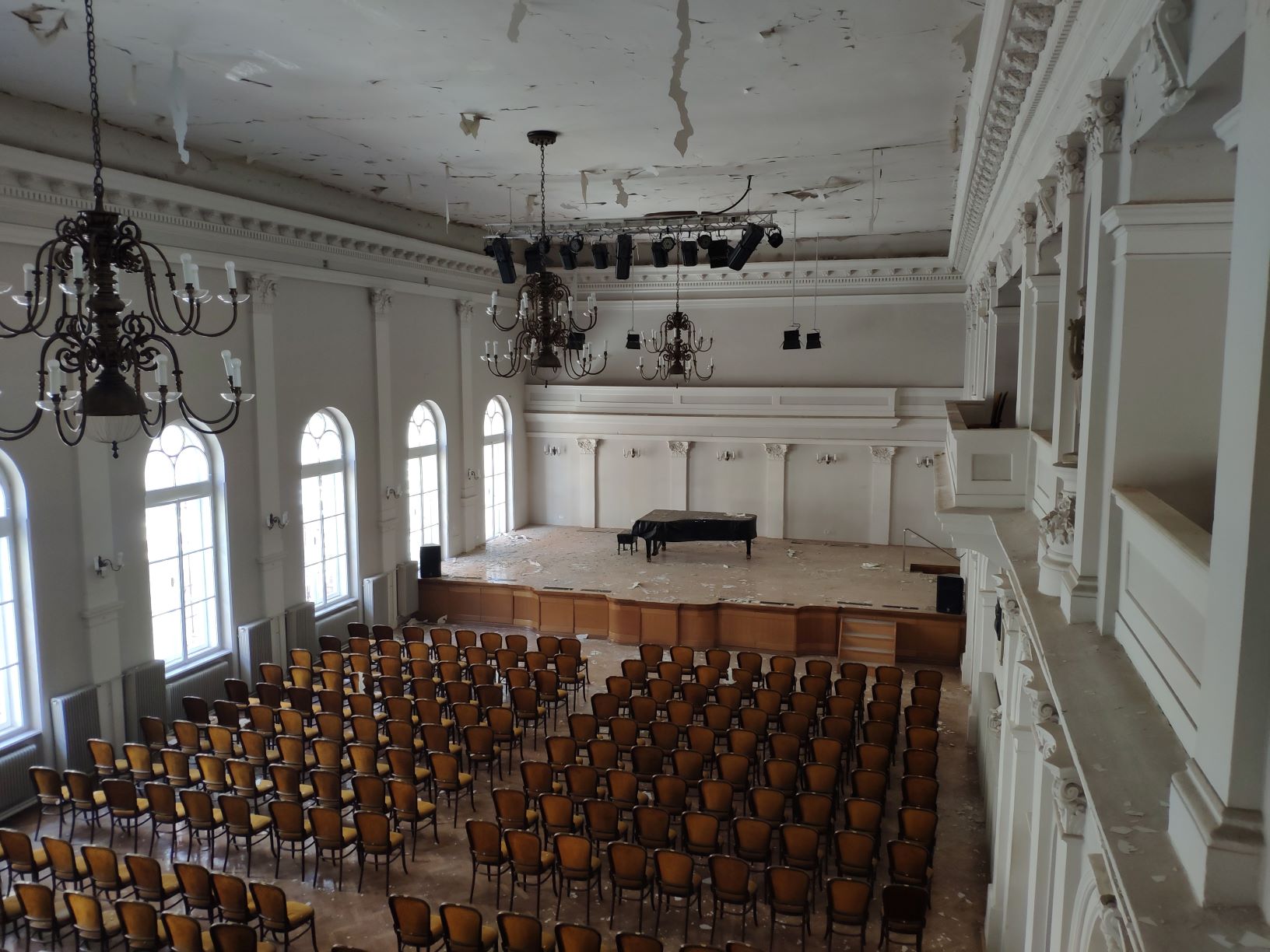
What was the first idea?
Well, my first idea was for the Zagreb Soloists to provide a concert in the damaged hall of the HGZ without any audience and to stream it on the web. But of course, it didn't make much sense and I started seeking help at other addresses. Then I concluded that the highest instances with the mandate over culture, science and heritage are the Croatian Academy of Arts and Sciences and the Ministry of Culture. While the answer from the Academy came almost immediately, the reaction from the Ministry arrived only after repeated messages and telephone calls. And quite some. Unsurprisingly.
Maybe they thought you were just another person coming and asking for money?
No way. Our idea was explained clearly and distinctly. As said earlier, the only aim of this little mission is to raise awareness of the fact that if we don't take to a thorough, professional restoration of the venues vital for performing arts and arts and sciences in general, to the buildings that we hold and cherish our national memory, our entire future of a civilised nation with a real identity is at stake. At this moment in time, in this devastating situation with the aftermath of the earthquake and the coronavirus pandemic, awareness is so vital, it is a prerogative to a proper, complex action. We want everybody to be aware of the scope of this calamity and its invisible consequences.
Are you thinking of some particular target groups?
No. Not at all. The target is - everybody, from the highest authorities and institutions to the widest general public reachable, from politicians to a retired grandma reading newspapers on a bench in the park. I should hope we can eventually grow and as such attract more and more attention. This is only a modest, optimistic start that isn't pretending that it will change the world, but aims to rekindle something not necessarily active in the awareness of people.
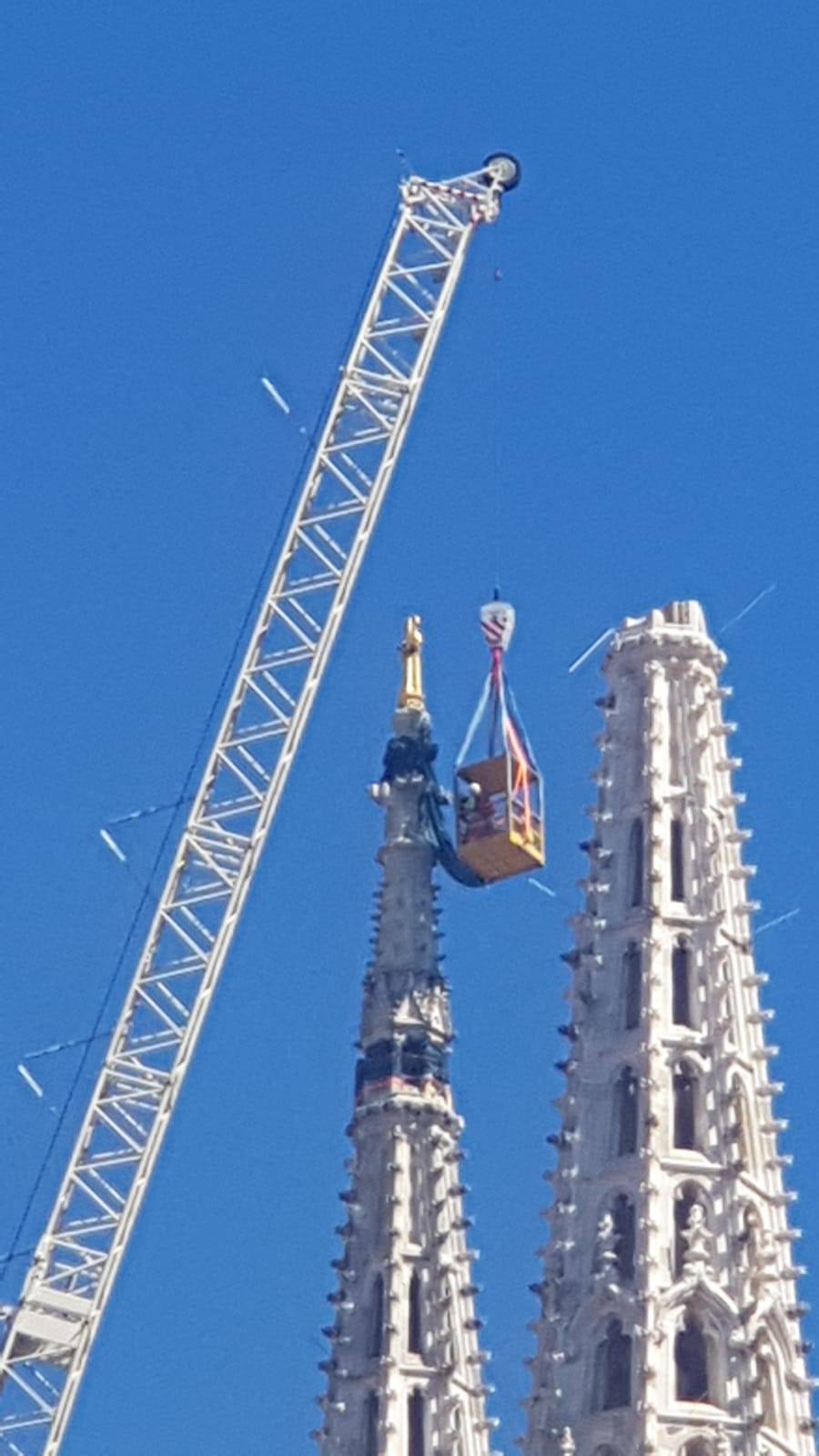
So, in the wake of the earthquake and amid the ongoing coronavirus pandemic - how do we begin?
We've conceived a small programme consisting of two events. The first is going to take place on a live web stream at noon on Tuesday, June the 2nd, 2020. It's hopefully only the first in a series of more discussions on the subject. In this first one, we're going to hear the viewpoints from HAZU’s Prof.sci. Mladen Obad Scitaroci, from Ms. Iva Hraste Soco of the Ministry of Culture, from Milana Vukov Runjic of the City of Zagreb and, in the name of arts, from Krunoslav Maric of the Zagreb Soloists. It's going to be streamed by our main media sponsor Vecernji list and in collaboration with Opis Film, our partner company.
Total Croatia News is proud to join all the media that will announce and follow this praiseworthy initiative. In the following days, make sure to follow our further coverage of the second part of ''Zagreb I love you so'' - a very special concert of the Zagreb Soloists on the evening of June the 7th, 2020 at 20:00, which will also be streamed live on Unimedia’s channel dedicated the the initiative, which you can subscribe to here.
Let's all come together and contribute our beloved Zagreb's recovery, even if only by having it in our daily thoughts.
For more, follow our lifestyle page.


